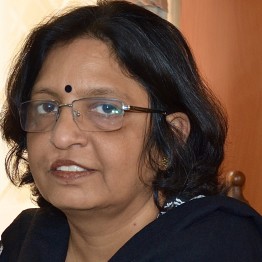Data from the fourth round of the National Family Health Survey 2015-16 (NFHS-4) show that education of girls and women continues to be neglected in rural areas of Odisha. District Fact Sheets from NFHS-4 show that every second female aged 6 and above in rural areas of six districts of south Odisha had not attended school. Further, less than one fifth of women in the 15-49 age groups in rural areas of 13 districts of Odisha had completed 10 years of schooling. These badly-performing districts are geographically concentrated in the south and have a sizable proportion of Scheduled Castes and Scheduled Tribes in the population.
National Family Health Survey (NFHS) is a household based large scale sample survey which collects data related to health and family welfare. NFHS also collects information on educational attainment of members of sample households. For the first time NFHS-4, which was conducted in 2015-16, has published district-level data.
In rural Odisha, the percentage of females aged 6 and above who ever attended school was 65 per cent. There was wide variation across districts: the proportion of females who ever attended school ranged from 39 per cent in Rayagada district to 79 per cent in Jagatsingpur district. There are 13 districts, out of 30, with performance below the State average. In six districts, namely, Rayagada, Koraput, Malkangiri, Nabarangapur, Kalahandi and Gajapati, less than 50 per cent of females in rural areas had attended school. Except for Gajapati all five districts are part of the KBK region (the undivided districts of Koraput, Balangir, and Kalahandi) which is one of the most backward regions of India. The combined Scheduled Caste and Scheduled Tribe population of Gajapati district constituted two thirds of the district’s rural population. The combined Scheduled Caste and Scheduled Tribe population in the rural area of these six districts constituted 67 per cent of the total rural population of these districts. In other words, all the six districts are Scheduled Caste and Scheduled Tribe majority districts.
Table 1 Districts with fifty or less percentage of females aged 6 and above who ever attended school, Odisha, rural areas, 2015-16 in per cent
| District | Percentage of female aged 6 and above who ever attended school |
|---|---|
| Gajapati | 50 |
| Kalahandi | 49 |
| Nabarangapur | 46 |
| Malkangiri | 42 |
| Koraput | 42 |
| Rayagada | 39 |
Source: District Fact Sheets, NFHS-4, available at http://rchiips.org/NFHS/OR.shtml

Another indicator of educational attainment is years of schooling completed. In rural Odisha only 23 per cent of women aged 15 to 49 had completed 10 years of schooling. The proportion ranged from 8 per cent in Nabarangapur to 47 per cent in Jharsuguda. There were 13 districts in which the percentage of women in rural areas with at least 10 years of schooling was 20 or less (Table 2). All six districts mentioned earlier also feature here. Seven districts namely, Nabarangapur, Rayagada. Koraput, Kalahandi, Nuapada, and Balangir are part of the KBK region. The combined Scheduled Caste and Scheduled Tribe population constituted 51 per cent of the rural population of the 13 districts. In Malkangiri, Rayagada, Nabarangapur, and Koraput more than 70 per cent of the rural population belonged to Scheduled Caste and Scheduled Tribe communities.
Table 2 Districts with 20 or less percentage of women with 10 or more years of schooling in 15 to 49 age group in rural areas , Odisha, 2015-16 in per cent
| District | Percentage of women in 15 to 19 age group with 10 or more years of schooling |
|---|---|
| Nayagarh | 20 |
| Sambalpur | 20 |
| Balangir | 19 |
| Nuapada | 19 |
| Baudh | 18 |
| Kandhamal | 17 |
| Kalahandi | 16 |
| Gajapati | 15 |
| Ganjam | 15 |
| Koraput | 10 |
| Malkangiri | 10 |
| Rayagada | 9 |
| Nabarangapur | 8 |
Source: District Fact Sheets, NFHS-4, available at http://rchiips.org/NFHS/OR.shtml
It is shocking that after seven decades of planning over half of females in rural areas aged 6 and above had never attended school in six districts of Odisha. Fewer than 20 per cent of women, in rural areas had completed 10 years of schooling in 13 districts. What is noteworthy is that the districts with a poor record of women’s education were also districts in which the majority of the population belonged to Scheduled Castes and Scheduled Tribes. In this context, there are worrying news reports of schools being closed in rural areas. It was reported that the highest number of schools closed was in Rayagada (124) followed by Kandhamal (101) district. Seventy primary schools were also closed in 2016-17 in Ganjam district, the district with highest number of Scheduled Caste persons in the State. The role of caste discrimination in school education clearly needs further study.
About the author
Subhadarshee Nayak is a PhD Scholar at the Economic Analysis Unit, Indian Statistical Institute, Bengaluru.











































































